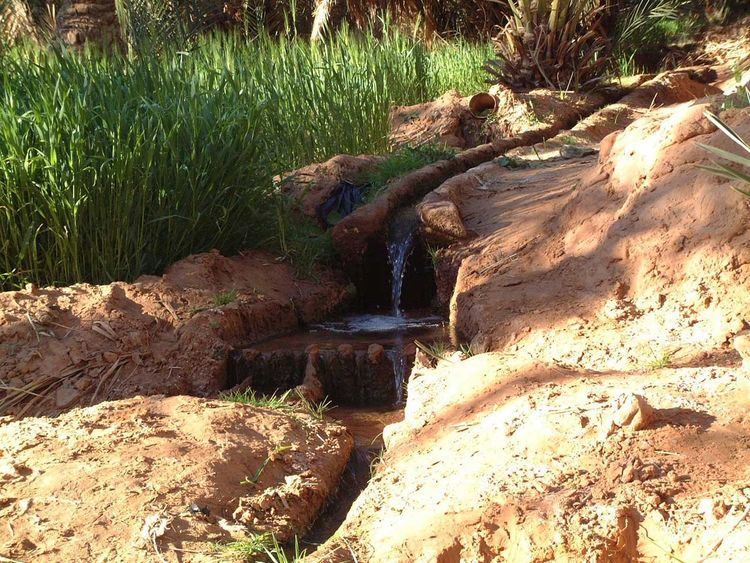 | ||
The Arab Agricultural Revolution (also referred to variously as Medieval Green Revolution, Muslim Agricultural Revolution, Islamic Agricultural Revolution and Islamic Green Revolution) is the name given by the historian Andrew Watson in an influential 1974 paper to what he argued was a fundamental transformation in agriculture from the 8th to the 13th century in the Islamic region of the Old World. He listed eighteen crops that were widely diffused during the Islamic period, including four staple crops, namely durum wheat, Asiatic rice, sorghum, and cotton. He also argued that techniques such as irrigation were spread across the region at that time.
Contents
Scholars such as the historian Michael Decker have disagreed with parts of Watson's proposal, arguing that the four staple crops were already widely disseminated before that period, and that Islamic irrigation built on rather than replacing the Roman irrigation network in Spain. However, the historian Paolo Squatriti, reviewing Watson's paper 40 years on, noted that it had proven useful to many different historical agendas, and had held up surprisingly well in the face of new findings in archaeology and archaeobotany.
Watson's paper
Watson's proposal was an extension of the Spanish historian Antonia Garcia Maceira's 1876 hypothesis of an agricultural revolution in Al-Andalus (Islamic Spain). It also recalled the Belgian economic historian Henri Pirenne's 1939 view of the way that a seventh century Islamic maritime power in the Mediterranean had isolated Europe from trading there.
Watson argued that the economy established by Arab and other Muslim traders across the Old World enabled the diffusion of many crops and farming techniques across the Islamic world, as well as the adaptation of crops and techniques from and to regions beyond the Islamic world. Crops from Africa such as sorghum, from China such as citrus fruits, and from India such as mango, rice, cotton and sugar cane, were distributed throughout Islamic lands, which, according to Watson, had not previously grown these plants. Watson listed eighteen such crops. Watson argued that these introductions, along with an increased mechanization of agriculture and irrigation, led to major changes in economy, population distribution, vegetation cover, agricultural production and income, population, urban growth, distribution of the labour force, linked industries, cooking, diet and clothing in the Islamic world.
Reception
Watson's work was met with some early scepticism, for example from the historian Jeremy Johns in 1984. Johns noted that Watson's selection of 18 plants in his book Agricultural Innovation in the Early Islamic World was "peculiar", since the banana, coconut, mango and shaddock were unimportant in the Islamic region at the time, detracting from the discussion of the staple crops. Johns further noted that the evidence of diffusion of crops was imperfect, that Watson made "too many minor slips and larger errors", and had failed to make best use of the evidence that was available, such as of the decline of classical agriculture. Johns however concluded that "The hypothesis of an 'Abbasid agricultural revolution is challenging and may well prove useful".
The historian Eliyahu Ashtor wrote in 1976 that agricultural production declined in areas of Iraq (Mesopotamia) and Egypt, on the basis of records of taxes collected on cultivated areas. In a 2012 paper focusing on the Sawād area of Iraq, Michele Campopiano concluded that Iraqi agricultural output declined in the 7th to 10th century; he attributed this decline to "competition of the different ruling groups to gain access to land surplus".
In 2009, the historian Michael Decker claimed that widespread cultivation and consumption of four staples, namely durum wheat, Asiatic rice, sorghum and cotton were already commonplace under the Roman Empire and Sassanid Empire, centuries before the Islamic period. He suggested that their actual role in Islamic agriculture had been exaggerated, arguing that the agricultural practices of Muslim cultivators did not fundamentally differ from those of pre-Islamic times, but evolved from the hydraulic know-how and 'basket' of agricultural plants inherited from their Roman and Persian predecessors. In the case of cotton, which the Romans grew mainly in Egypt, cultivation remained minor in the classical Islamic period, the major fibre being flax, as in Roman times. Decker further asserted that the advanced state of ancient irrigation practices "rebuts sizeable parts of the Watson thesis," since for example in Spain, archaeological work indicates that the Islamic irrigation system was developed from the existing Roman network, rather than replacing it. Decker agreed that "Muslims made an important contribution to world farming through the westward diffusion of some crops", but that the introduction of "agronomic techniques and materials" had been less widespread and less consistent than Watson had suggested.
The archaeologist and classical scholar John Peter Oleson, and the archaeologist and historian Örjan Wikander argued in 2000 that agricultural devices such as watermills and waterwheels, shadufs, norias, sakias, water screws and water pumps were widely known and applied in Greco-Roman agriculture long before the Muslim conquests.
Looking back over 40 years of Watson's theory, the historian and linguist Paolo Squatriti noted in 2014 that the thesis had been widely used and cited by historians and archaeologists working in different fields. It "proved to be applicable in scholarly debates about technological diffusion in pre-industrial societies, the 'decline' of Islamic civilization, the relations between elite and peasant cultural systems, Europe's historical Sonderweg in the second millennium CE, the origins of globalization, [and] the nature of Mediterraneity." Squatriti noted that Watson had originally trained in economics, and applied this interest to his historical studies. Squatriti described Watson's paper as concise and elegant, and popular for its usefulness in supporting many different historians' agendas. He observed that Watson's thesis did not depend on claims of new introductions of plants into any region, but of their "diffusion and normalization", i.e. of their becoming widely and generally used, even if they were known from Roman times. Calling Watson's "philological" approach "old fashioned", and given that Watson had worked "virtually without archaeology", Squatrini expressed surprise that recent research in archaeobotany has failed to "decisively undermine" Watson's thesis.
